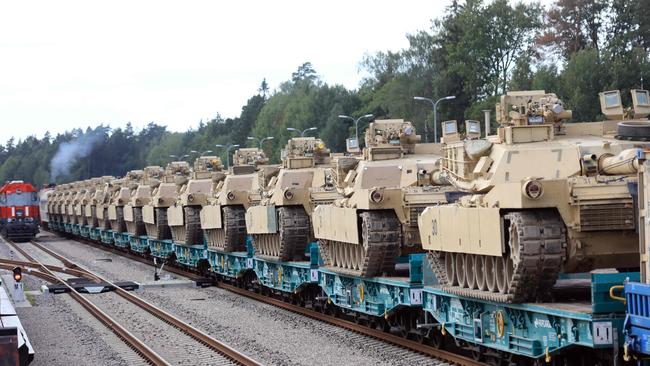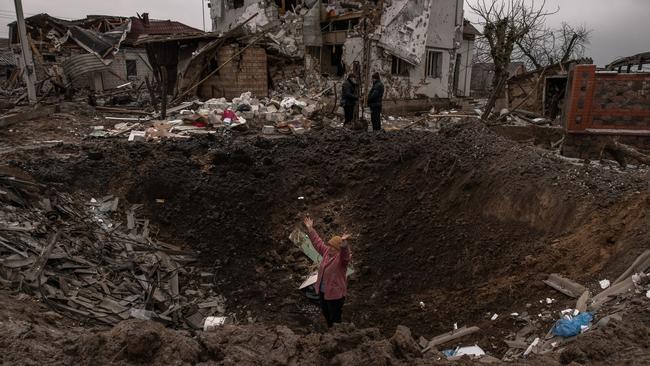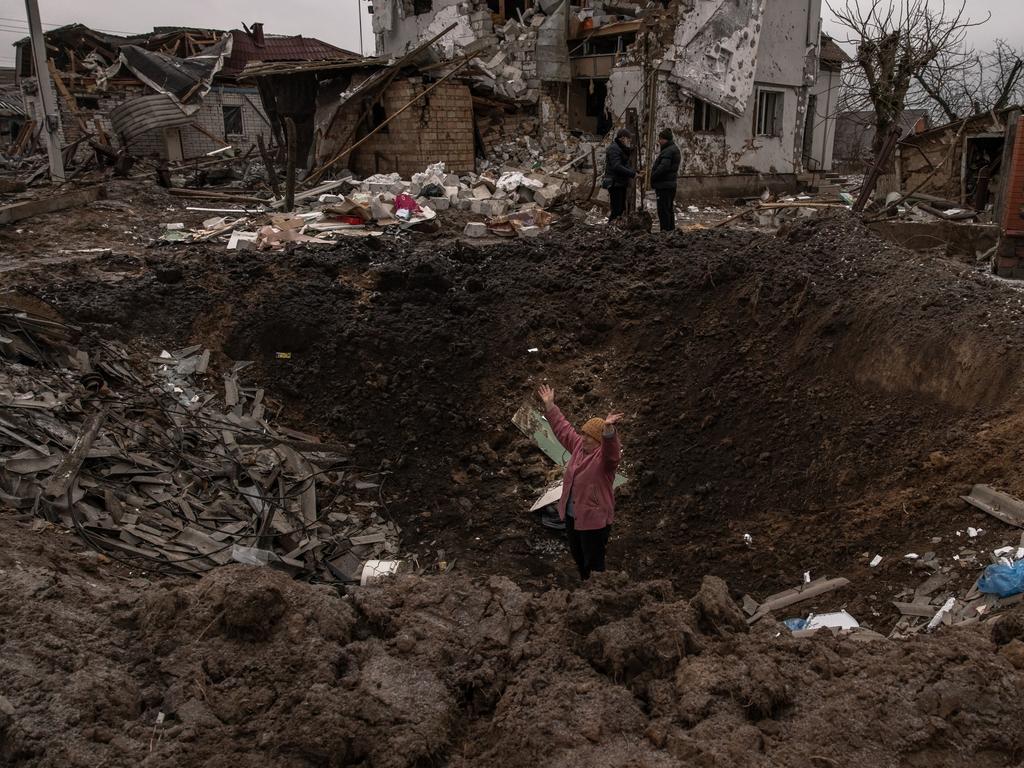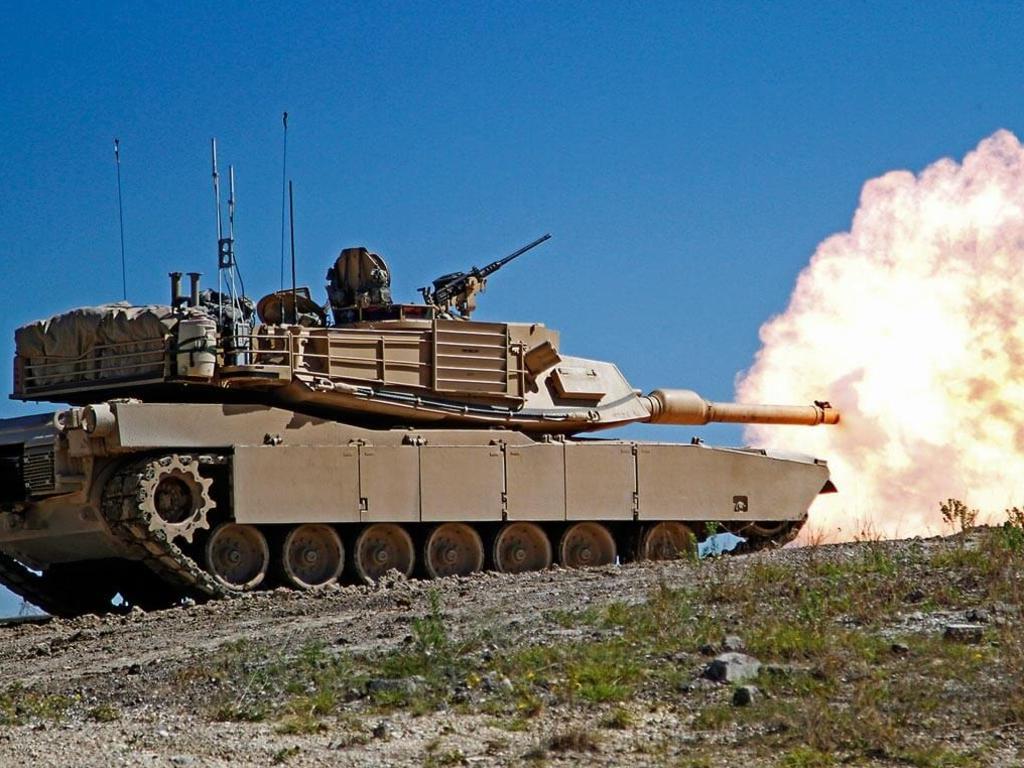It is difficult to see the relatively small number of pledged tanks matching their billing of becoming a game changer. At the Battle of Kursk in 1943 - still taught in Russian military academies as one of the pivots of the Second World War - Hitler had 50 divisions with 435,000 men and 3,155 tanks against a Red Army force of over a million men and 3,275 tanks, a clash between heavy-gunned armadas. In the Russian telling, it was the swansong of German armour, a masterpiece of Soviet operational land war.
Little wonder that western militaries fetishised the Russian tank threat. My father told the story of a 1960s military exercise on the Luneburg Heath, south of Hamburg and not far from the East German border. He became stranded and ended up in a sprawling barn filled with loud, chain-smoking and carousing Scottish troops who had been designated “dead” by the war game referees. They had been outmanoeuvred by made-up Soviet tank units which were already deep inside West Germany. “You must be in hell,” my mother told him when he rang her to complain about the Jocks.

The real war in Ukraine today is not Kursk 1943, but nor is it make-believe. At the start of the invasion almost a year ago the Russian army was fielding about 2,600 operational tanks. The Oryx website, which logs losses only after verifying photographic evidence, estimates that 921 have been destroyed, 124 damaged or abandoned and 534 captured, including 14 modern T-90s now being used by the Ukrainian army. Ukraine began the war with 453 tanks, of which 269 were destroyed, 24 damaged, 16 abandoned and 144 captured. The brute figures do not take into account the rapid deterioration of Russian tank barrels when being used as static artillery. But nor do they include the new weaponry rolling off production lines in Russia’s war-economy factories.
The fact is even if the West makes good on its promise to supply a total of 200 or so more tanks by the spring, Ukraine will still be outgunned. It will be a game changer only if you subscribe to magical thinking: namely that the superior tech, accuracy and firepower of Leopard 2s, Challengers and Abrams tanks will transform combined arms operations and break Russian morale on the front line. Kyiv is stepping up demands for western kit - F-16 fighters that could break Russia’s supply lines are next on the shopping list. Volodymyr Zelensky fights this war by constantly introducing new elements to bamboozle and slow down the Russians. He wants to present Ukraine as a de facto Nato ally and thus give the Kremlin pause. But he still hasn’t convinced the likes of Olaf Scholz or, more importantly, Joe Biden that he has a plausible strategy for driving Putin out of Ukraine.

And so the US is escalating but, it seems, with the limited aim of pushing Russia into a military stalemate that leaves open the possibility of a diplomatic settlement with a weakened Putin. That may seem weird to punters and upsetting to Ukrainians but it is a familiar trajectory in geopolitics. Putin, meanwhile, is as unsettled as other political players by the insertion of Nato tanks into his war and will choose to escalate, perhaps in late summer, in order to de-escalate.
Providing that Putin is still a rational actor, his escalation will not involve the use of tactical nuclear weapons. That would risk shattering his compact with China and would squander the support or toleration of non-aligned states such as India.
But there are plenty of non-nuclear ways of stepping up the conflict. He could intercept arms deliveries as they make their way through western Ukraine to the various front lines. Cruise missiles have already hit the country’s electricity grid and could take down railway lines. Arms depots on the Polish-Ukrainian border, indeed across Ukraine’s Nato neighbours, could be sabotaged. Anything that hints of a future east-west split of Ukraine, of the country’s isolation, or queries the governing competence of Zelensky: these are operations well within the competence of the Russian army, its special forces, Putin’s disinformation units.
This then could be how 2023 evolves. A spreading war of ups and downs, managed after a fashion but, if fumbled, turning into a conflict that drags on for the rest of the decade and leads to the Balkanisation of whole swathes of central Europe. It’s not perhaps the apocalyptic, radioactive escalation that Nato was preparing for in the early 1980s; rather, a war of permanent destabilisation. A relentless, increasingly hazardous non-nuclear escalation that drives investors out of the continent and leaves Nato confused and exhausted rather than re-energised.
Putin will try to turn Ukraine into yet another one of his frozen conflicts. That’s what we have to fight against, with tanks, with smart weapons, whatever it takes to stop the Russian army thinking of itself as an imperialist force. An outcome that ends up crushing Ukraine, wiping out its spirit of resistance and national pride, and hands it over to a disruptive revanchist dictator would be a shaming defeat for us all, the beginning of a new dark age.






The great nightmare of the Cold War was that giant Russian tank armies would not only crush their immediate neighbours but also sweep across the north German plains, hug western cities like Hamburg and hold them hostage, confounding all our calculations about a cautious escalation ladder. Now we have promised to supply Ukraine with a Nato tank army, there is a new version of this bad dream: is the war set to run out of control?